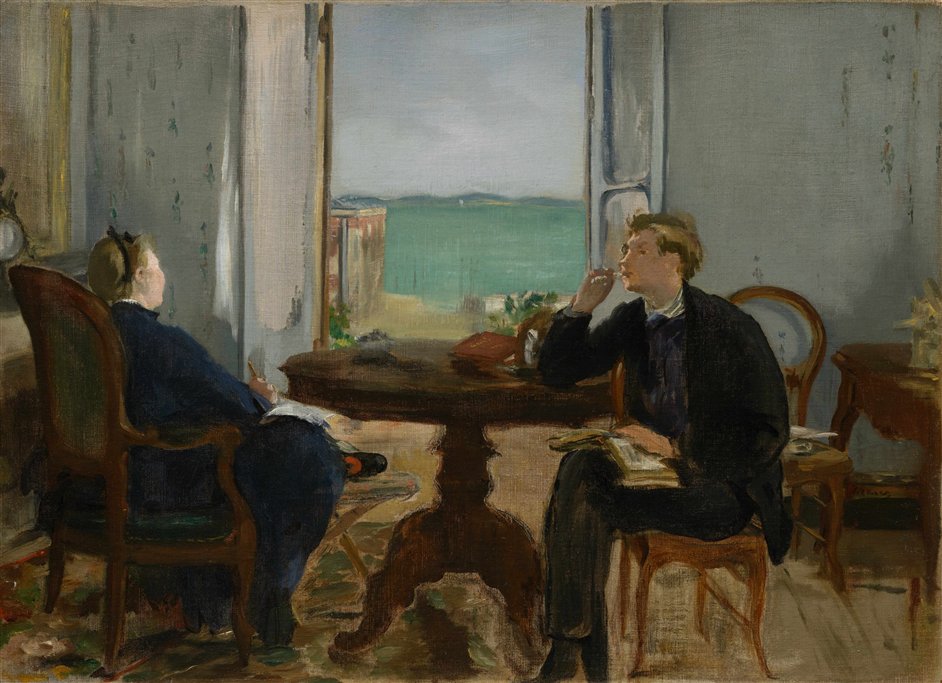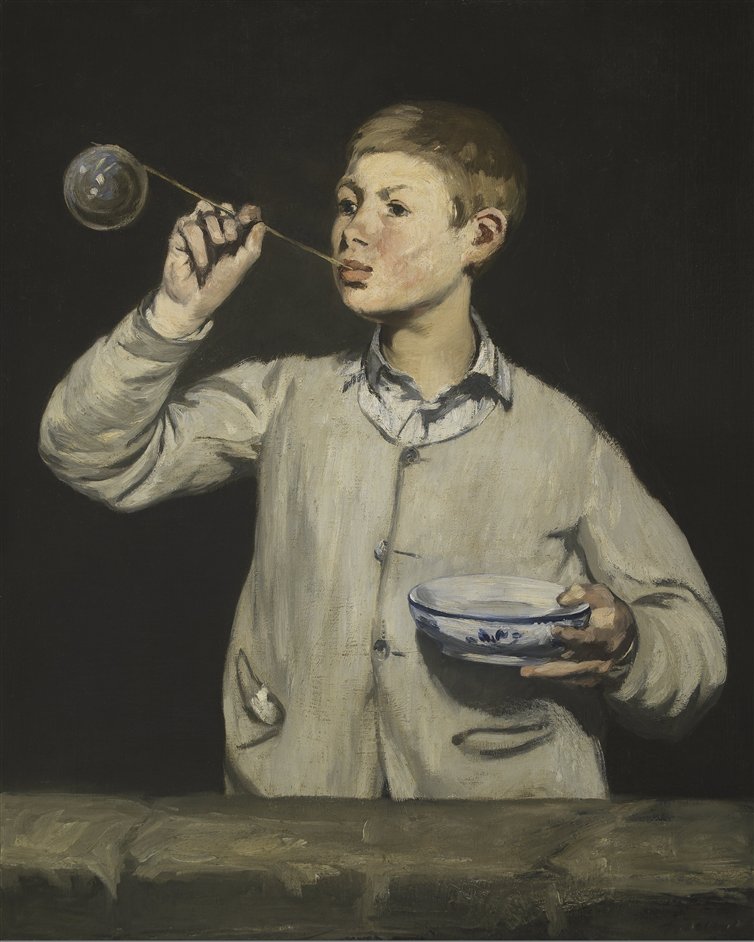Venues:
Toledo Museum of Art through Jan 1, 2013
Royal Academy of Arts Jan. 26–April 14, 2013
A contemporary of the Impressionists, Manet (1832–1883) painted his family, friends and the literary, political and artistic figures of his day, often in casual settings rather than traditionally posed portraits. His subjects come to life on canvas, making the viewer curious to know more about these people and their lives.
Among his works on display were:

Lady with a Fan (Jeanne Duval), 1862, from the Museum of Fine Arts in Budapest;

The Railway, 1872–73, from the National Gallery of Art in Washington, D.C.;

The Monet Family in their Garden at Argenteuil, 1874, from the Metropolitan Museum of Art

Chez le Pére Lethuille (1879) , Courtesy of Musée des Beaux-Arts, Tournai

Portrait of Antonin Proust (1880) , Toledo Museum of Art

Édouard Manet, Mme Manet in the Conservatory, 1879 (The National Museum of Art, Architecture and Design, Oslo)

Madame Manet at the Piano (1868) , Musée d'Orsay, Paris

Eva Gonzalès (1870) , The National Gallery, London

Portrait of Emilie Ambre as Carmen (1880) , Philadelphia Museum of Art

Luncheon in the Studio

Music in the Tuileries Gardens,


Interior at Arcachon, 1871
From an outstanding review of the Royal Academy show (images added):
More relaxed is the 1880 impressionist portrait of Suzanne with a cat on her lap. Her illegitimate son appears in 1867's Boy Blowing Bubbles, a painting of wonderful plainness, with one hand raised as he blows a pendulous bubble from a pipe, the other proffering a bowl of soapy water.
Boy Blowing Bubbles (1867) , Calouste Gulbenkian Foundation, Lisbon
The work is as controlled as Chardin's paintings of the same subject. While the weightless bubble unbalances the entire composition, the whole thing is held in check by the little scrap of white rag or handkerchief peeking from the boy's pocket.
Such little details matter in Manet:
the flaring whiteness of the pith in the halved lemon in the portrait of Zacharie Astruc, with its coil of yellow peel spiralling out of the picture; the sexy peach in a bowl on a corner of Zola's desk;
Émile Zola, 1868, from the Musée d’Orsay in Paris.
the zig-zag of grey smoke from poet Stéphane Mallarmé's cigar, his old man's finger pointing.
Manet didn't just paint life, he painted from life, so everyone who appears is a kind of portrait. From the outrageous Déjeuner Sur l'Herbe (the smaller of the two versions, belonging to the Courtauld Gallery, is here) to smokers and bubble-blowers, from portraits of eminent writers to one of a lion-hunter, everyone is someone – even the anonymous Street Singer, from 1862.
Édouard Manet, Street Singer, c.1862 (Museum of Fine Arts, Boston)
She emerges from a doorway not singing, but stuffing her face with grapes, which are as round and full as her eyes. The model is Victorine Meurent, whose portrait Manet painted the same year. What strikes you is how clear her gaze is, how solid an object her head is. In the portrait, she is both thing and person, and declaratively made of paint. The same can be said of the two portraits of artist Berthe Morisot,
The Repose (Portrait of Berthe Morisot) (1870) , Museum of Art, Rhode Island School of Design, Providence
Berthe Morisot with a Bouquet of Violets, 1872. (Photograph: RMN (Musee d'Orsay)/Herve Lewandowski)
the later of which shows her in mourning. It is as if the first, beautiful portrait has collapsed, under not just the weight of her misery, but of paint itself. She seems to have imploded.
Catalogue:

Manet: Portraying Life by Maryanne Stevens, Stéphane Guégan, Carol M. Armstrong, Leah Lehmbeck, Colin B. Bailey and Lawrence W. Nichols






